12 Things That Are Dangerous for Dogs to Eat
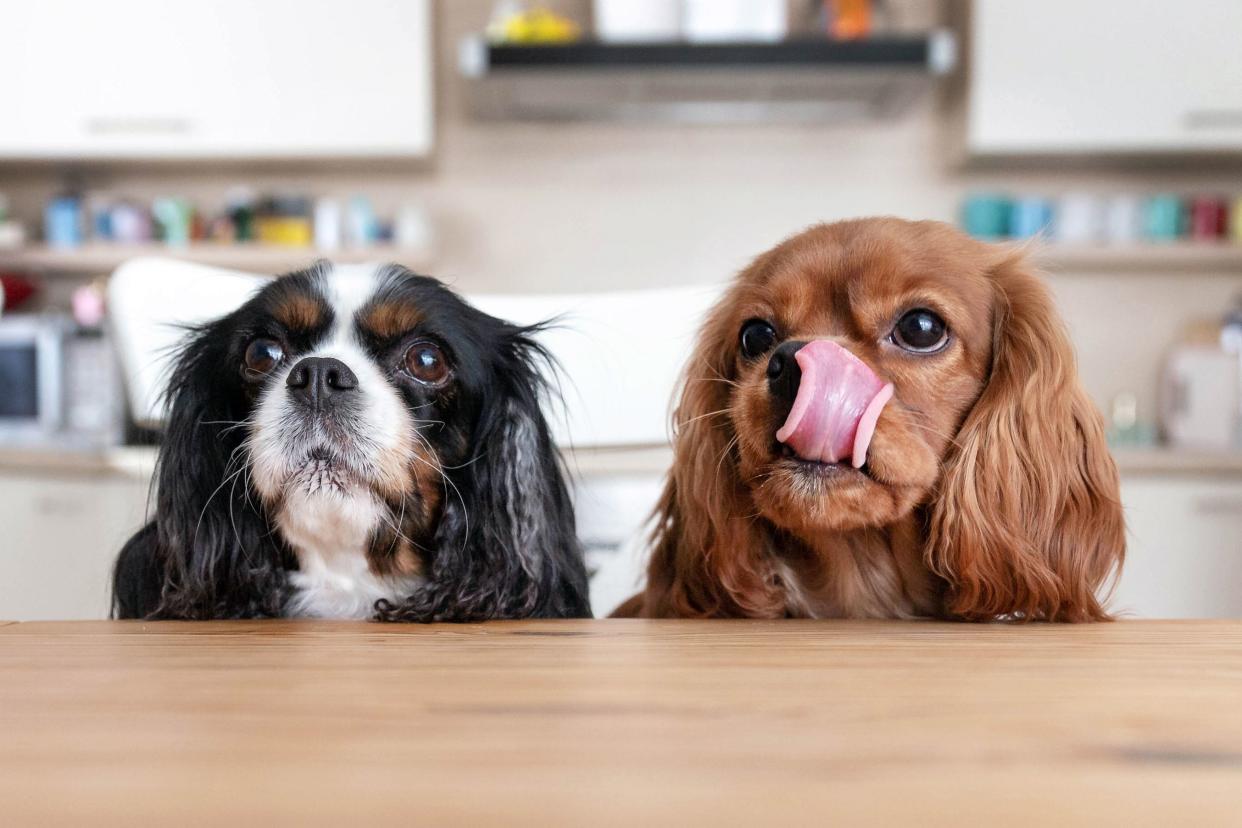
Be careful — some of your favorite foods might lead to a life-or-death scenario for your dog. Though your buddy may beg for table scraps, there are certain “human foods” to keep away from a precious pet, no matter the puppy eyes they make at you. If you suspect your dog has eaten one of these items, contact your veterinarian or the Pet Poison Helpline as soon as possible.
Related: Best Pet Supplies to Buy at Costco
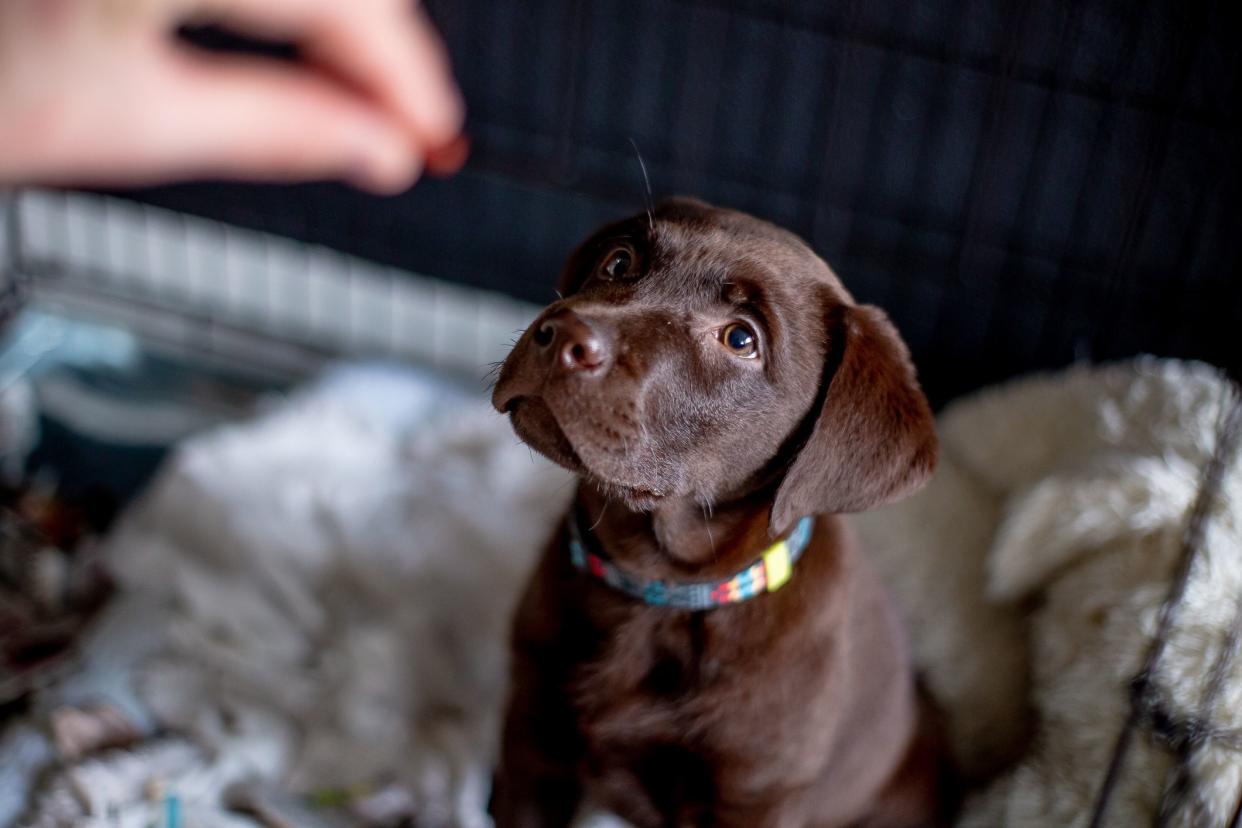
Because this artificial sweetener, typically found in sugar-free gum, breath mints, mouthwash, and toothpaste, tastes like sugar, it may be tempting for pets. But Xylitol should be kept away. Even small amounts, such as from two pieces of gum, can cause seizures, liver failure, or even death. Xylitol is quickly absorbed into the bloodstream and causes a rapid decrease in blood sugar, says VCA Animal Hospitals says, which can happen within 10-60 minutes.
Related: These Are the Best Dogs For Seniors
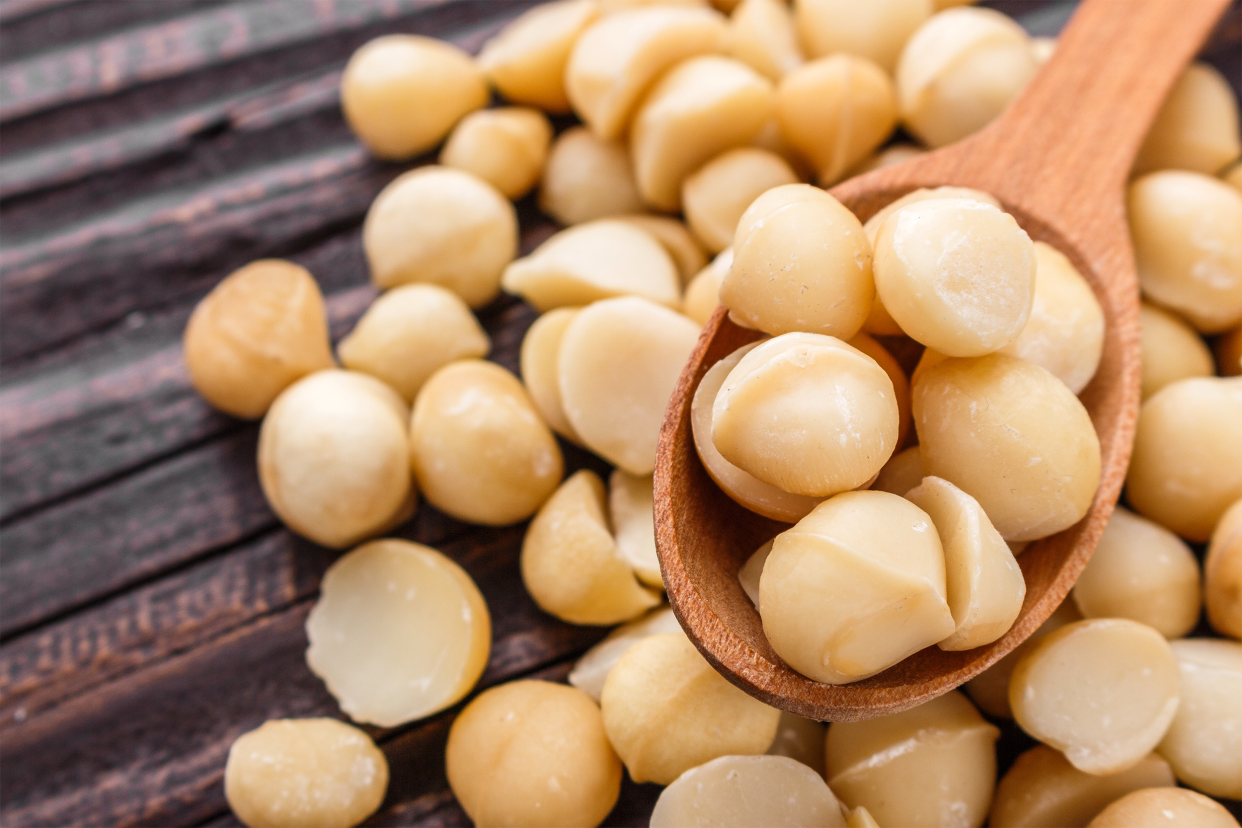
These tasty but fatty nuts may cause pancreatitis, an inflammation of the pancreas, if a little bit is eaten by dogs, even within a cookie or bread. Other common symptoms from macadamia nut ingestion include weakness in the back legs, vomiting, and diarrhea, the ASPCA says.
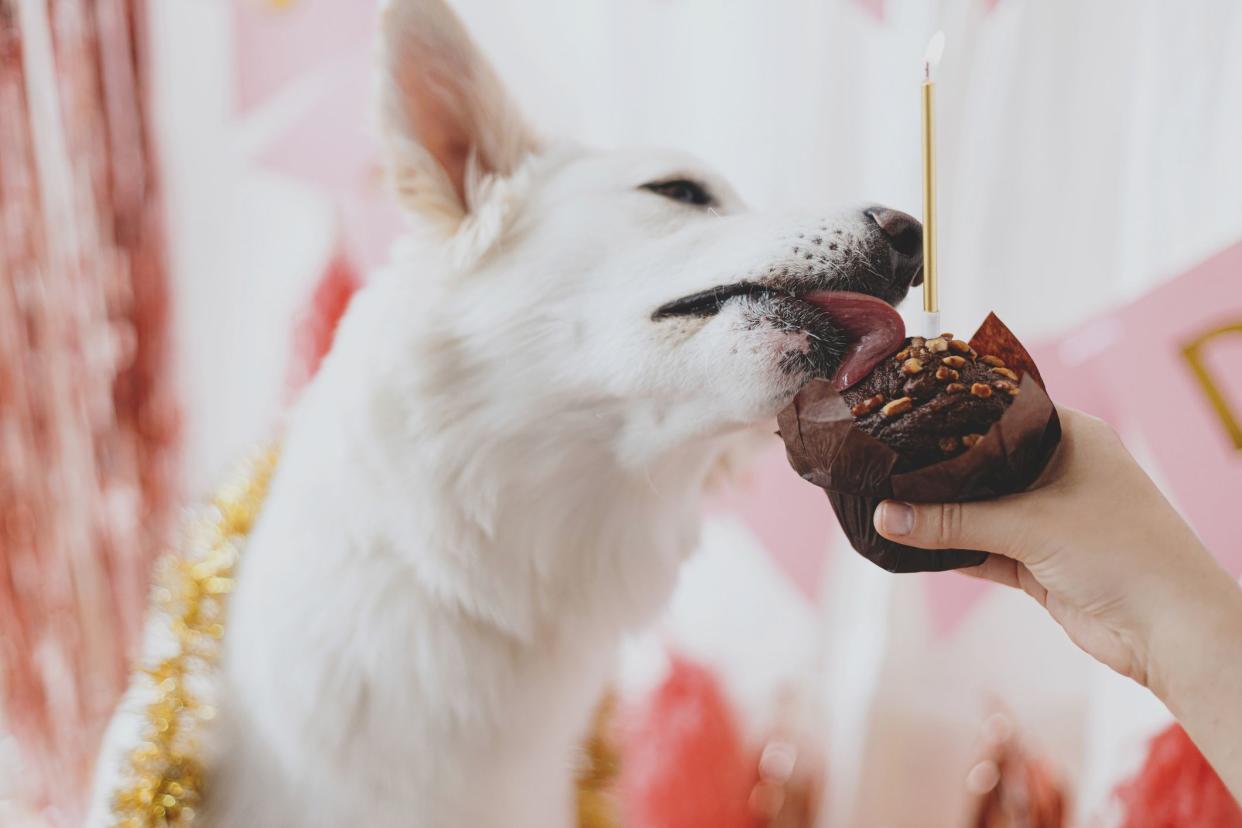
Chocolate is another ingredient dogs may ingest when counter surfing. The signs of chocolate poisoning usually appear within six to 12 hours, and symptoms can be wide ranging: vomiting, diarrhea, increased thirst, panting or restlessness, excessive urination, racing heart rate, muscle tremors, and seizures — and can lead to heart failure if too much is eaten. Chocolate contains theobromine and caffeine, which can speed the heart rate and stimulate the nervous system of dogs, according to the Merck/Merial Manual for Veterinary Health. Just how sick a dog gets can depend on the type and amount of chocolate; cocoa powder is considered the most toxic, milk chocolate less so. You can calculate risk based on how much and what was eaten.

Even one grape or raisin can be fatal for some dogs by leading to acute kidney failure, the American Kennel Club says, though dogs, generally, are more likely to be poisoned by large amounts, and there appears to be a range of sensitivity. Some dogs may be able to eat a few and be fine, according to VCA Hospitals. Though it’s not confirmed, the danger may arise from mycotoxins produced by fungus or molds, tartaric acid, or salicylates found in grapes that lead to decreased blood flow to a dog’s kidneys. Symptoms such as lethargy and lack of appetite appear within 24 hours after ingesting, with symptoms such as urination problems taking another day.
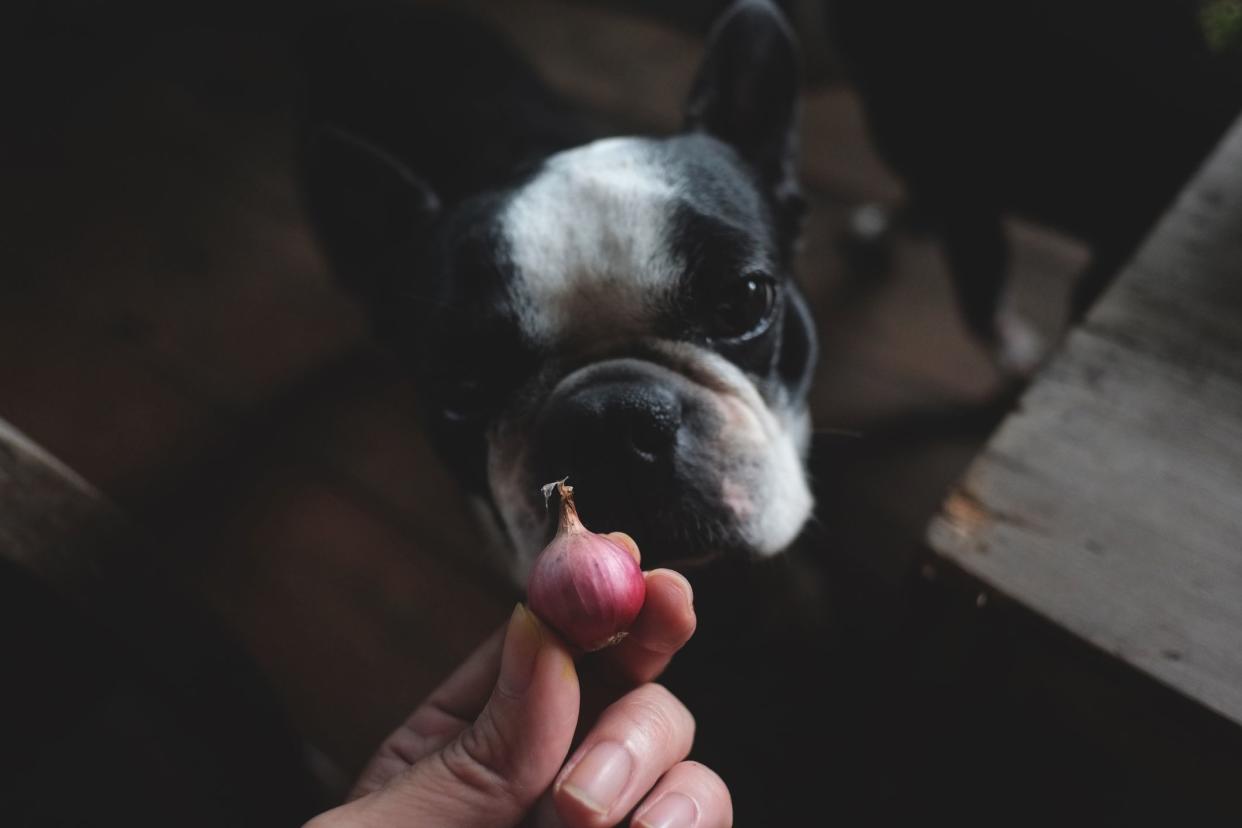
Though it’s hard to imagine a dog just grabbing an onion to chow down on, a pup could easily sneak a meal seasoned with onion, leeks, or chives, such as a piece of chicken, and a 45-pound dog need just eat the equivalent of one regular-size onion to suffer serious side effects. Onions and their cousins are dangerous because they can make a dog’s red blood cells fragile and cause them to burst, VCA Hospitals says. Certain breeds — such as dogs of Japanese descent including Akitas or Shiba Inus — may have a higher risk for toxicity.
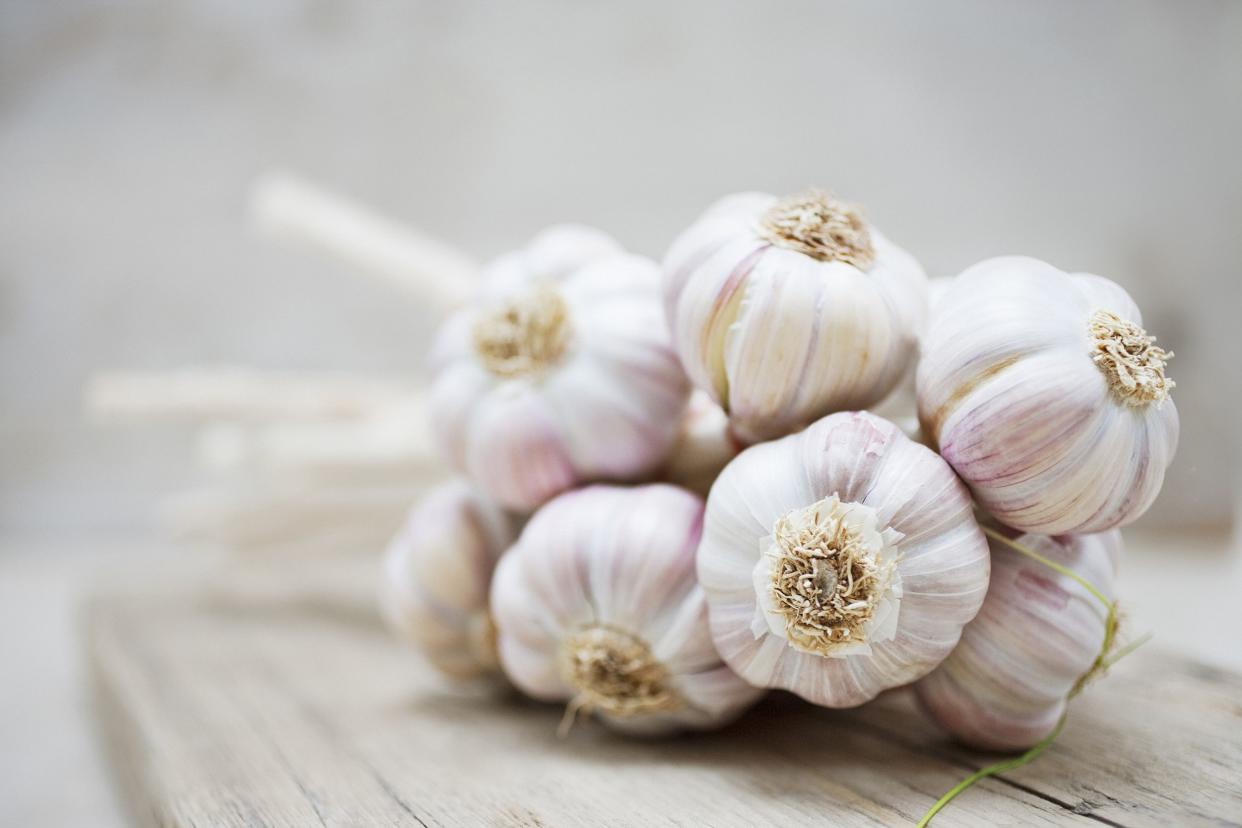
Like onions, garlic can cause harm to a dog’s blood cells. Be especially careful of concentrated dried and powdered forms, which could cause illness faster. It takes 15 to 30 grams of garlic per kilogram of a dog’s body weight to make them ill, and one clove of garlic typically weighs about 3 to 7 grams — but 1 teaspoon of garlic equals about eight cloves of garlic.
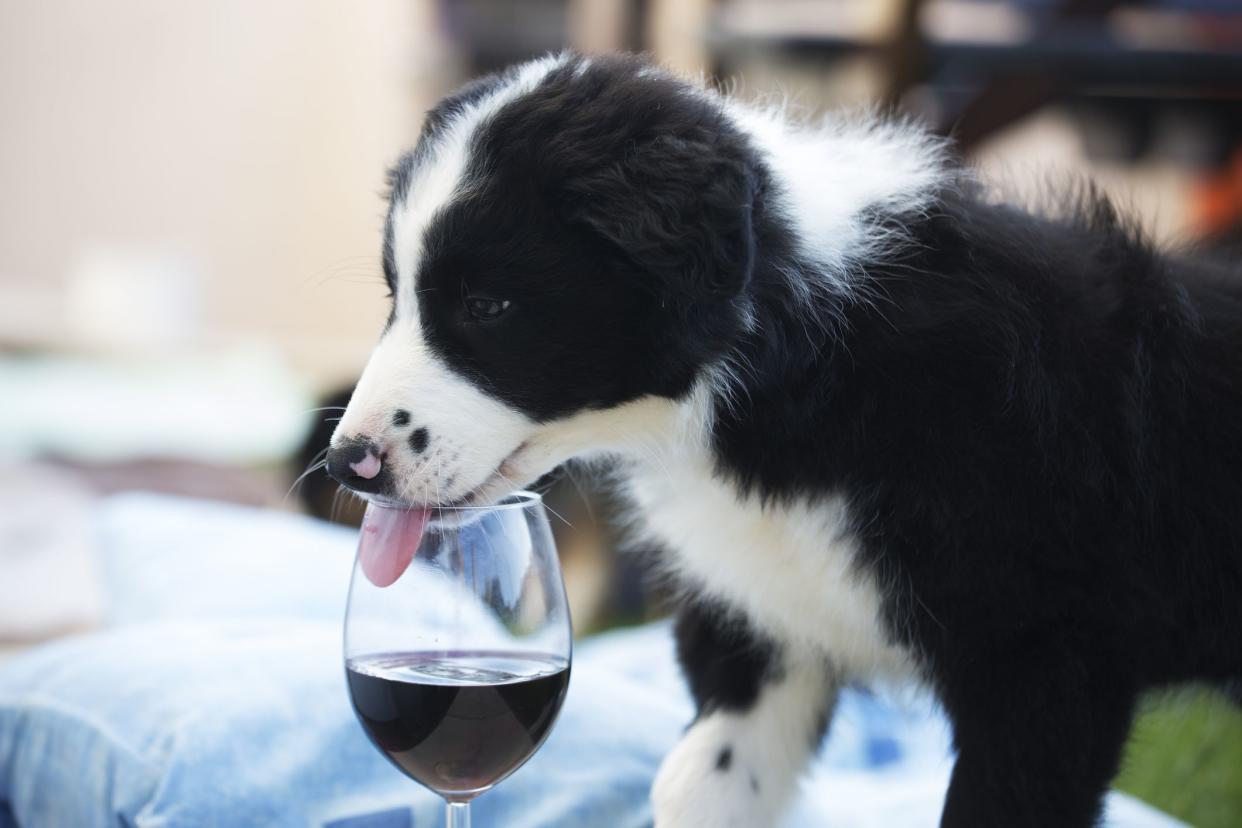
Alcohol’s effects on a dog are based on the pet’s size and the alcohol concentration ingested. For example, light beer is lowest in alcohol, while gin — or even the alcohol level in hand sanitizer — is going to be the highest and most dangerous. Symptoms of alcohol poisoning in dogs would be similar to humans and include a lack of coordination, vomiting, weakness, drooling, and finally decreased breathing.
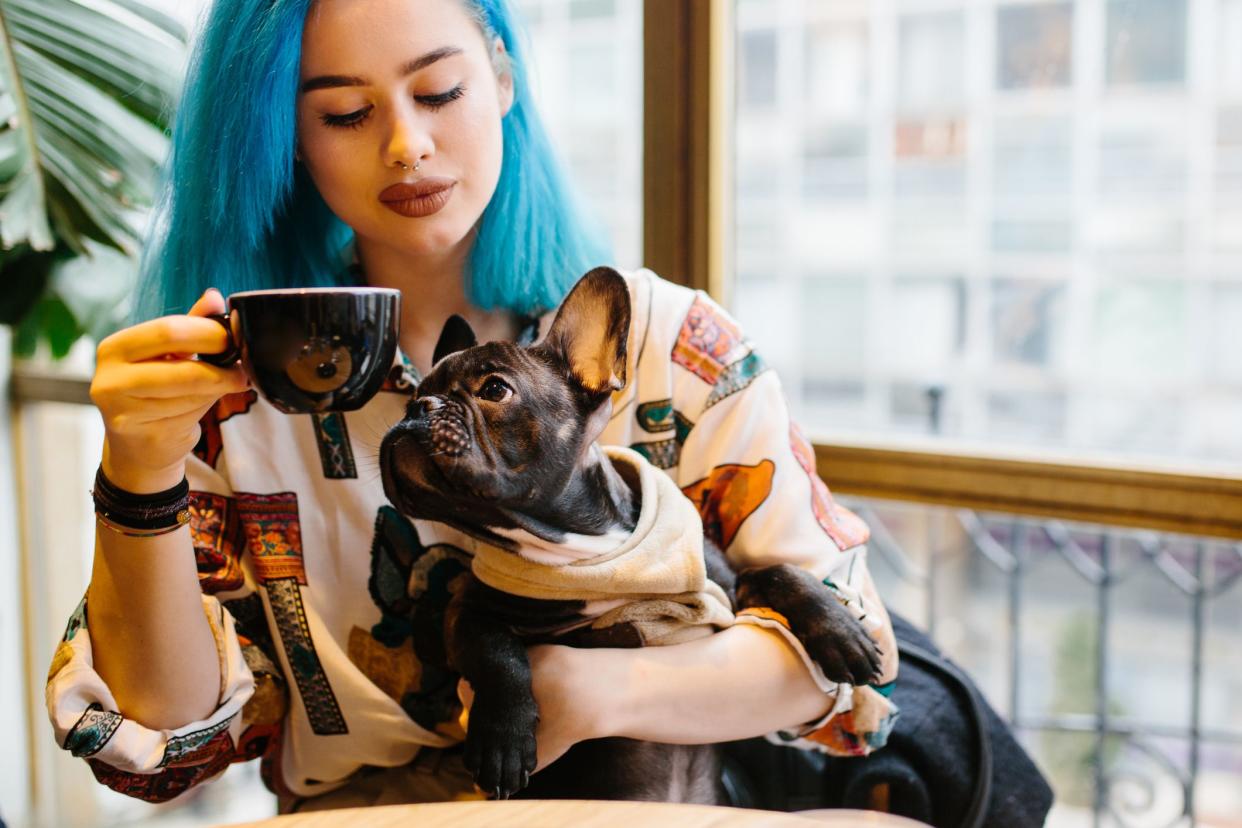
We may need it simply to wake ourselves up, but caffeine raises blood pressure in dogs and can cause cardiac arrhythmias. Pets may also lose muscle control and have tremors or seizures as a result of taking in caffeine, as well as suffer damage to the liver, heart, kidneys, lungs, and central nervous system. But one to two laps of coffee, tea, or soda is unlikely to cause problems for most pets; just be sure to keep coffee grounds, tea bags, and the like tucked away safely.
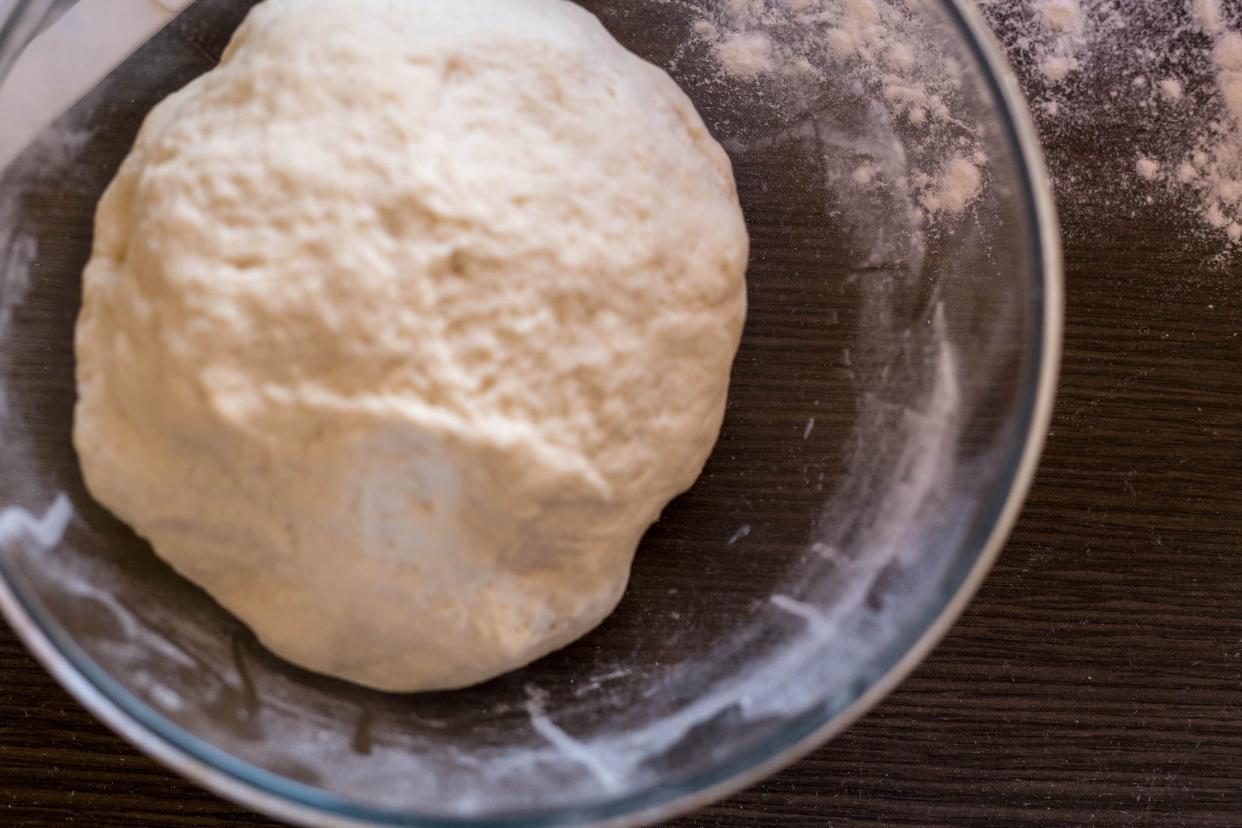
Baked bread is safe for dogs to eat, though it isn’t the most healthy treat to share with your pet. Letting a pet consume raw dough is downright dangerous, though. Unbaked bread dough can expand in the warm and moist environment of a dog’s gut, leading to bloat or a twisted stomach — a dangerous and even potentially deadly condition for dogs. Bloat symptoms include a clearly uncomfortable animal who may be retching with nothing coming up, distended stomach, an elevated heart rate, pacing, and panting.
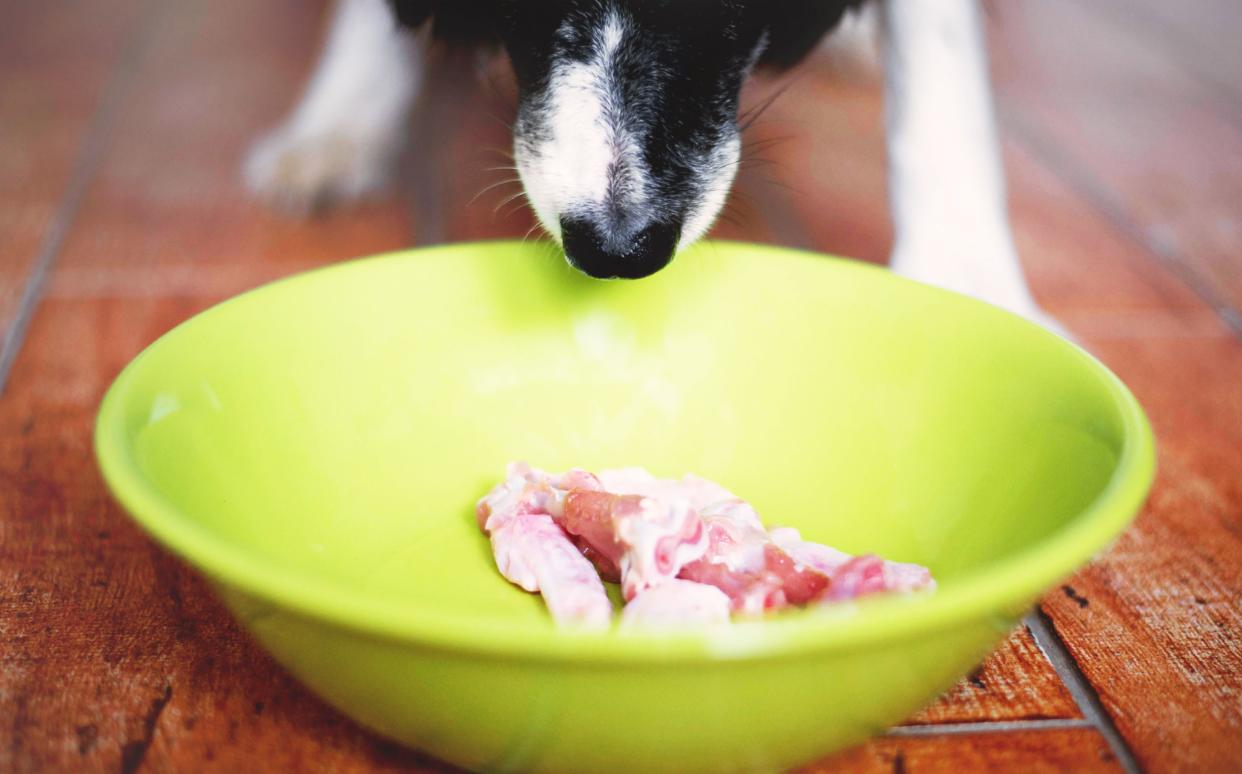
Raw food diets have become popular for pets, with many social media groups devoted to the topic. But before you jump on the raw-food bandwagon, be aware that it may not be safe. The Centers for Disease Control and Prevention, the Center for Veterinary Medicine, and the U.S. Food and Drug Administration all say raw dog foods can be dangerous to pets and their owners. One study found that nearly a quarter of commercially available raw dog foods tested positive for salmonella and listeria. These bacteria can make humans and canines very ill. But dogs are able to carry salmonella in their intestines without showing signs of illness, exposing owners unwittingly.
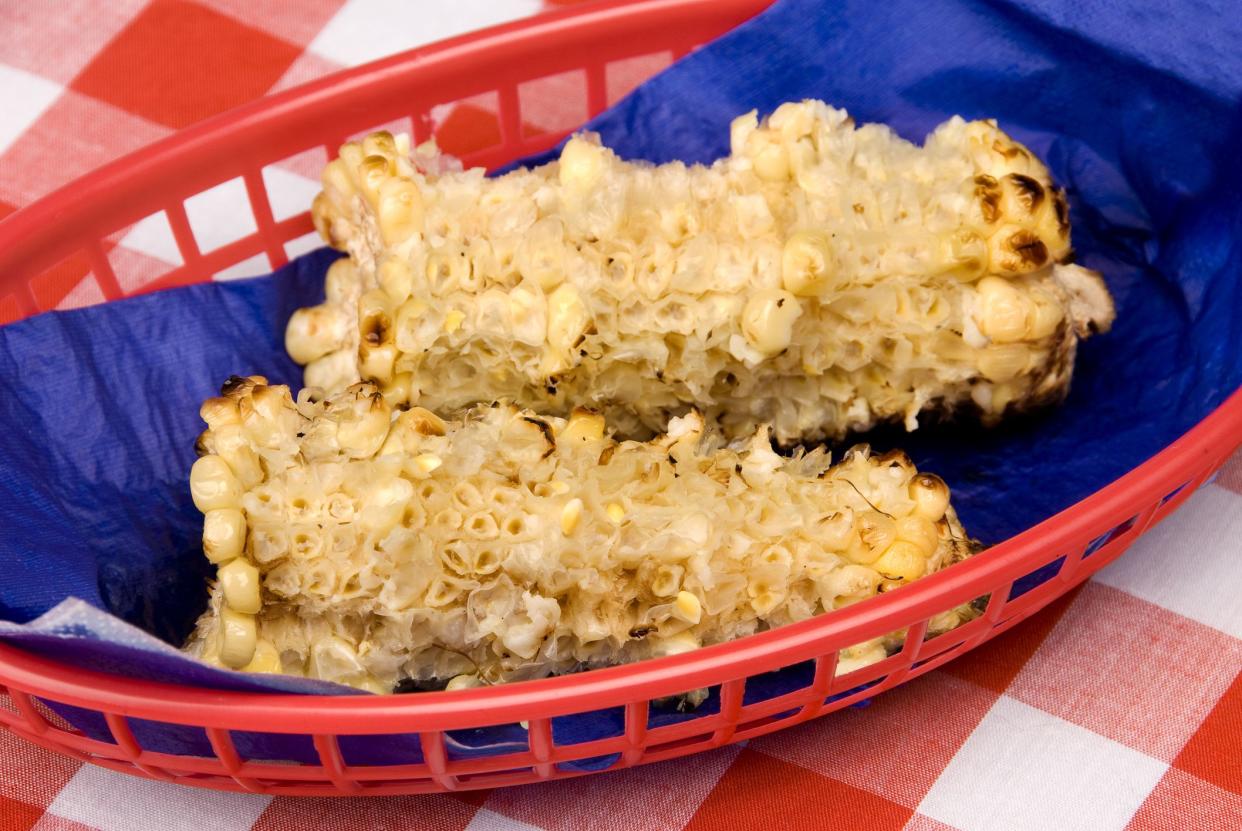
Dogs may love a taste of a nice meaty bone or a bite of a watermelon, but problems arise when these types of treats are given to a pet without monitoring. Dogs can’t be counted on to stop eating when they reach the part of a food that isn't digestible, which includes bones and watermelon rinds but also corn cobs, and peach and avocado pits. (In very small amounts, avocado pulp itself may irritate a dog’s stomach, though it is unlikely to cause death.) These items can cause an obstruction in the stomach, which may lead to surgery or worse.

For humans, this plant is decorative and pretty; for a dog it can be deadly. Eating even a small amount of the leaves and especially the seeds from this plant can cause severe gastrointestinal problems, affect the nervous system, and cause liver failure. Symptoms are likely to show up within 15 minutes of ingesting the plant, but may also take hours.

Like Cheapism's content? Make sure to follow us here.
